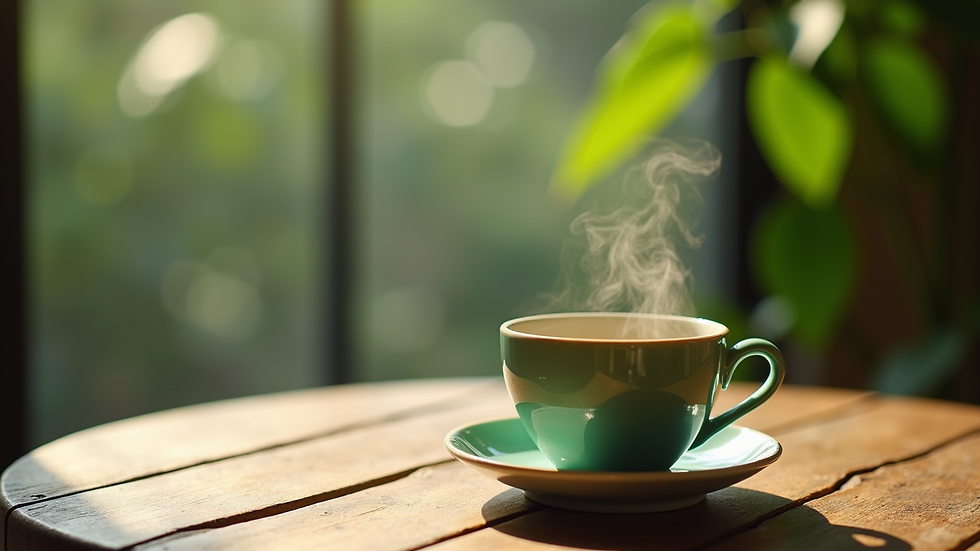Discover the World of Tea Varieties
- A Steep In Time
- Nov 16
- 3 min read
Tea is more than just a beverage - it is a journey through history, culture, and flavor. From the delicate white teas to the robust black teas, the world of tea offers a vast array of varieties to explore. Whether you are a casual drinker or a passionate connoisseur, understanding the different types of tea can enhance your appreciation and enjoyment.
Understanding the Basics of Tea Varieties
Tea comes from the leaves of the Camellia sinensis plant. The differences in tea types arise from how the leaves are processed after harvesting. The main categories include:
White Tea: The least processed, made from young leaves and buds. It has a light, delicate flavor.
Green Tea: Leaves are quickly heated to prevent oxidation, preserving a fresh, grassy taste.
Oolong Tea: Partially oxidized, offering a balance between green and black tea flavors.
Black Tea: Fully oxidized, resulting in a strong, bold flavor.
Pu-erh Tea: A fermented tea with a rich, earthy taste.
Each variety has unique characteristics influenced by factors such as region, climate, and processing methods.

Exploring Tea Varieties: Regional Differences and Unique Flavors
Tea varieties are deeply connected to their regions of origin. For example:
China is famous for its green teas like Longjing and white teas such as Bai Mudan.
India produces robust black teas like Assam and Darjeeling, often called the "Champagne of teas."
Japan specializes in green teas like Matcha and Sencha, known for their vibrant color and umami flavor.
Taiwan is renowned for its high-quality Oolong teas, which vary from light and floral to dark and roasted.
Understanding these regional differences helps in selecting teas that suit your taste preferences. For instance, if you enjoy floral and fruity notes, Taiwanese Oolongs might be your best choice. If you prefer a strong, malty flavor, Assam black tea is ideal.

How to Brew Different Tea Varieties for the Best Flavor
Brewing tea correctly is essential to unlock its full flavor potential. Here are some practical tips for brewing popular tea types:
White Tea: Use water at about 160-185°F (70-85°C). Steep for 3-5 minutes to avoid bitterness.
Green Tea: Water temperature should be 175-185°F (80-85°C). Steep for 2-3 minutes.
Oolong Tea: Brew with water at 190-200°F (88-93°C). Steep for 3-5 minutes.
Black Tea: Use boiling water (212°F or 100°C). Steep for 3-5 minutes.
Pu-erh Tea: Rinse leaves with hot water first, then steep at 200°F (93°C) for 3-4 minutes.
Using the right water temperature and steeping time prevents over-extraction, which can cause bitterness or astringency. Experimenting with these variables allows you to tailor the taste to your liking.
Health Benefits of Different Tea Varieties
Tea is not only flavorful but also offers numerous health benefits. Each variety contains antioxidants and compounds that promote well-being:
White Tea: High in antioxidants, supports skin health and may reduce inflammation.
Green Tea: Contains catechins that boost metabolism and improve brain function.
Oolong Tea: May aid in weight management and improve heart health.
Black Tea: Rich in flavonoids, supports cardiovascular health and gut bacteria.
Pu-erh Tea: Known for aiding digestion and lowering cholesterol.
Incorporating a variety of teas into your daily routine can provide a range of health advantages while keeping your palate interested.
Tips for Starting Your Own Tea Collection
Building a tea collection is a rewarding way to deepen your appreciation for tea. Here are some actionable recommendations:
Start Small: Begin with a few varieties like green, black, and oolong to understand your preferences.
Buy Loose Leaf: Loose leaf tea generally offers better quality and flavor than tea bags.
Store Properly: Keep tea in airtight containers away from light, heat, and moisture.
Invest in Quality Tools: A good teapot, infuser, and thermometer can improve your brewing experience.
Explore and Experiment: Try teas from different regions and processing styles to expand your palate.
For those interested in a deeper tea exploration, many online resources and specialty shops offer curated selections and expert advice.
Embracing the World of Tea
Exploring tea varieties opens up a world of flavors, traditions, and health benefits. Whether you prefer the subtlety of white tea or the boldness of black tea, there is a tea for every mood and occasion. By learning about the origins, brewing techniques, and health properties, you can transform your tea drinking into a rich and enjoyable ritual.
Start your journey today and discover the endless possibilities that tea has to offer.




Comments